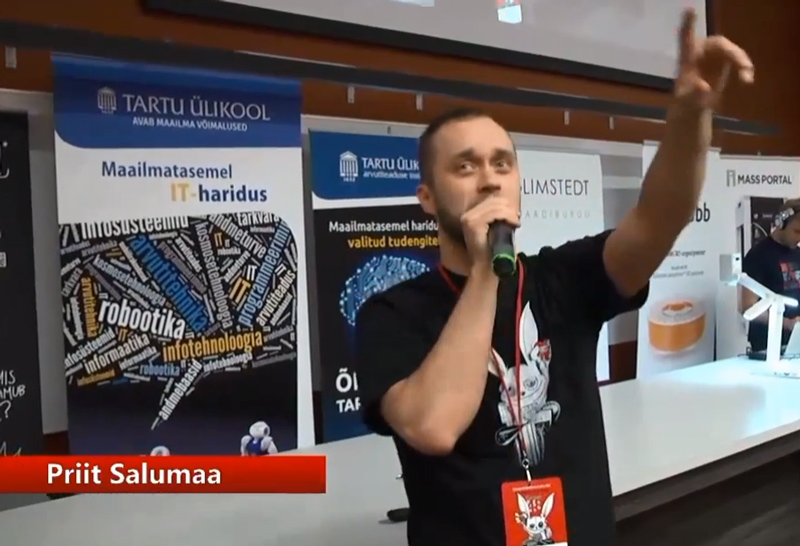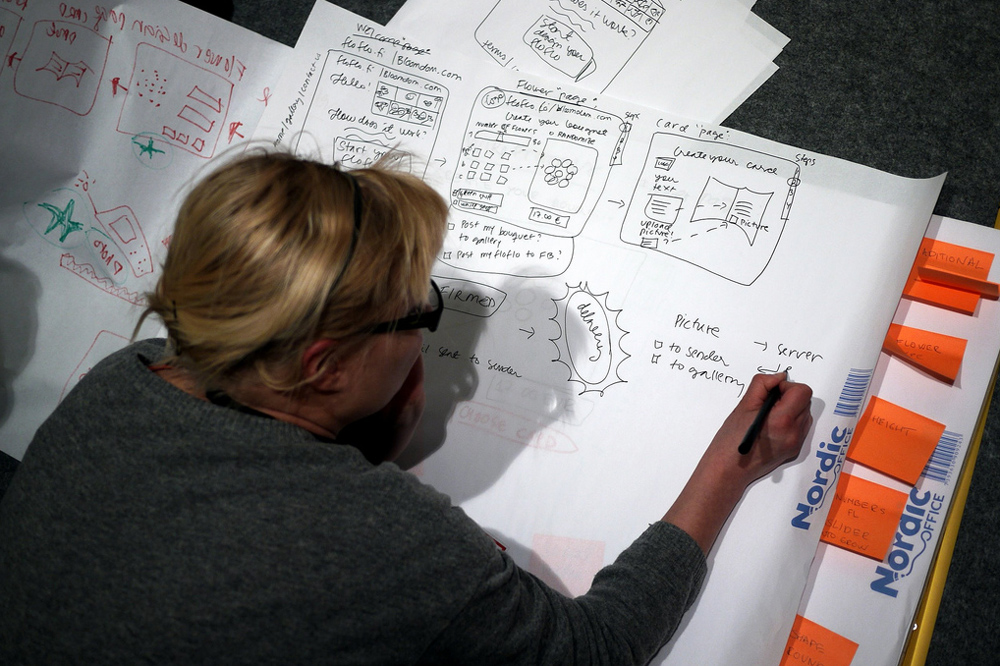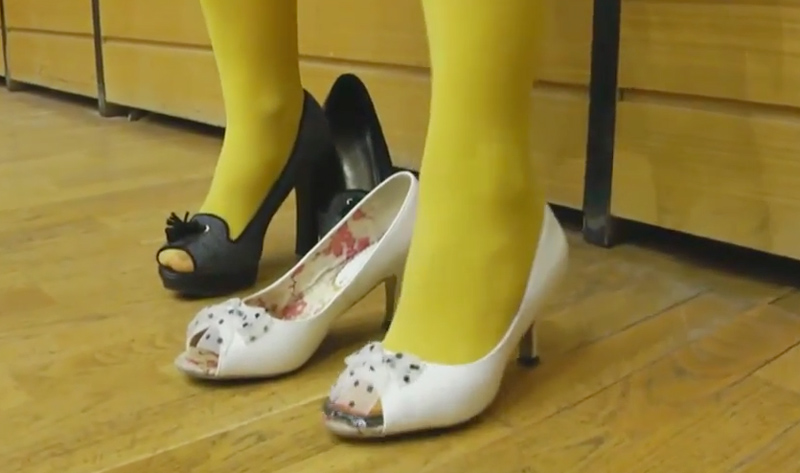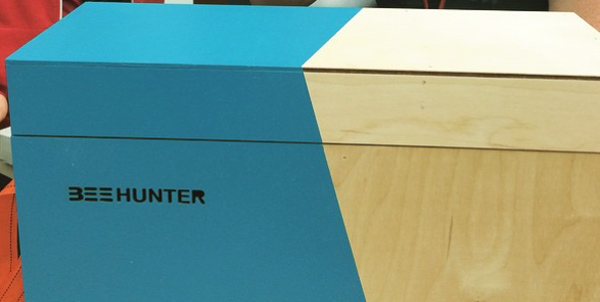Garage48 - or
The first Garage48 event was basically a software competition and «hackathon» – some results are real even for today, five years later, but of course – many teams ended just far away from real products or solutions. Hardware hackathons took place some years later, too. Real mechanical, robotics and medicine engineers participated in a hackathon to start things for that some big companies must develop for years. It´s all about team spirit and Garage48 vibe to make magic happen. The first Garage48 event was launched in April 2010 by Estonian Start-up Leaders Club. One of the first organizers, Ragnar Sass, explained that people’s lack of positive practice, experience, know-how and networking created a need for a 48 hour intensive ‘idea to service’ event.
First 48-hour hackathonAs the first hackathon took place at IT College in spring 2010, there were no classic garages for teams as it was too cold outside. Classrooms and corridors – even on stairways and cafes were the places to develop great ideas. 4-8 team members on each team tried to build their first start-up. Iseehitaja.ee (“Self-building” portal) team with some marketing professionals tried to do a world record of fastest selling of a start-up. Right after few hours they did first selling proposals to some Estonian building companies and published advertising in selling portal osta.ee (like eBay in Estonia) to provide a working start-up that existed just few hours. Iseehitaja.ee is a portal for self-builders who build their home. It helps to find materials and workers and offers tips and tricks. Few days later portal was sold, but the start-up ended soon silently. Iseehitaja was not the fastest in building their product at the first event of Garage48. Start-up team Cocktail Roulette launched their prototype to the public at just the same speed or a bit earlier. Cocktail Roulette is another software project – one of Garage48 team members, Priit Salumaa, was involved and remembers, that they run on the first evening with their laptops through the house to find a quiet place for coding. They coded all night and not only – at night they started “field works” on bars to introduce Cocktail Roulette. The basic idea is simple: users can send SMS and receive a random cocktail receipt. Then the user has to present this to a barmen or just tell him, what to mix. The app is recording your orders and next time you can remember from Facebook or web, what you drank last night. Team members visited different bars, they went from door to door and many bars were quite interested, because this app could help them to sell more cocktails. Another team prepared a mobile app for mushrooming – visit the forest, find mushrooms and geotag them. Or use places geotagged by others for better results. The problem: the most people didn´t want to betray their secret places to others. Another project – Poliitik.eu (“Politicians”) – this team tried to present public government data and pre-election programs to allow them to check to what extent politicians keep to their promises and how well they do their job in the parliament later. Rules of garageThere are certain rules of garage to make magic happen in 48 hours. All participants take laptop, 3.5 m power extension cord, mobile phone and chargers. And mattresses, sleeping bag and towel, if needed. At the end participants will provide their idea to the public. Solutions are presented based on the "elevator-pitch" method within 90 seconds. Event host and audience can ask 1 to 3 short questions. Teams can prepare one PDF slide to support the pitch. When pitching is over, organizers put all the ideas on the wall. Every participant can choose their favoured idea and this is how teams will be formed. Usually 12 to 15 best ideas collect enough interested people to win the «green light» for the implementation. The average team counts about 5 to 7 people. Important is, it should be «balanced» – covering all necessary expertise like engineers, designer, a project manager (team lead/visionary), and marketer in order to get the product/service ready in 48 hours. Minimum size for a team is 4 people, max is 8. If an idea gets too few people or the team is not balanced (probably unable to build the service), the idea will be dumped. The released people follow another idea/team. The organizers give every team a room/space for the weekend. Sunday afternoon 1:00 pm is the deadline of building works. The final demo event starts at 4:30pm. Each team gets 3 minutes for product demonstration (+2 minutes for questions). Powerpoint presentations or screen shots are not allowed – the jury wants a live demo only. So, it is necessary to build something ready to work – maybe not in full scale, but with some basic features. International hackathons at very exotic placesBeing really successful in Estonia, Garage48 small team of Estonian software entrepreneurs decided to lift the idea on an international level. So they moved to Nairobi, Kenya, to organize an 48-hour hackathon in Africa in september 30 to October 2, 2011. The event was sponsored by Google, Blackberry, Nokia etc. The event was held at Strathmore University with 10 registered teams. The winner of Nairobi Garage48 was Kamata Cab, a software project for taxy ordering in a new way. It’s an application that enables you to search for a cab and gives – you depending on your location – a number of recommended cabs that you can take nearby. Meanwhile this type of apps is very popular – consider Taxify and Uber for example. But it was a very innovative and fresh idea in 2011. The idea gained acceptance. Next hackathons took place in Johannesburg, Accra, Lagos, Helsinki, Valmiera, Minsk, Moscow, Kaliningrad, Ventspils, Kiev, Riga, Lviv, Kampala, Pärnu, Vitebsk etc. But today we know more than software and services events. There are many interesting engineering hackathons and others, too. For example, medicine, public sector or art and hardware events take place under the brand of Garage48. It´s really hard to do a hardware product in 48 hoursHardware is not as easy as coding and software development in 48 hours. Doing real things takes more time, money and maybe skills, depending on the idea what you want to do. Garage48 Health&Wellness was a 48-hour medicine hack in April 2014. There were about 40 participants and for the first time great medicine and IT expertise needed. At the pre-event people discussed about new healthcare technology ideas. As main direction the personalization of medicine services was figured out. Many projects were software related, but some were hardware projects, too. The Garage48 Tallinn 2014 event «Health&Wellness» was the very first attempt under this brand to combine healthcare focus with IT and bring health professionals to a hackathon. There is no average patient, everyone is unique, and medicine services must count with it, was the main idea of pre-discussions. With 160 people there were a record number of participants at this event, including 19 healthcare specialists who met technology professionals and enthusiasts from other fields. 41 ideas were up before the event and 15 teams formed ideas to prototype in 48 hours. There are some ideas that were pitched at Sunday evening: 1. Jimmy – only main functions in app to help for diet and training. 2. DonateIT – donors and blood centers united system to find resources in real-time. 3. Up4Beauty – «last minute» beauty services environment. 4. StreetWise – interactive moving/running game on the streets to discover places where user have not been. 5. LabelTrus – shows on mobile in real-time, how different food influences your health. 6. MediKeep – convenient mobile app to manage medication at home. 7. HealthConnect – visualizes health data in an understandable way. 8. Curescope – systematic symptoms checker. 9. Heartify – software for measuring blood pressure, weight and pulse to prevent heart diseases. According to jury the best team was DonateIT – for donors and blood centers. Garage48 GreenTech – save the world within 48 hours!Second themed software and hardware event and 40th Garage48 was Greentech in Tallinn. The selected winner after the 48-hour competition was Creatomus, a tool that empowers you to create the utmost energy efficient future home. Play around with different parameters (number of windows/rooms/sun's direction etc) and see what impact it has on your household energy consumption. But there were other great green projects, too, for saving the environment and nature. PostPal for example, a delivery service for online stores that offers fast, cheap and green delivery by eliminating middleman courier companies. Or VeggieRadar – Distributed Community Supported Agriculture, an openly linked scheme for distributing seasonal production of hobby gardeners. This is a good approach to prevent that food is thrown away but swap it with people who maybe need it. Hardware & Arts 2015: where steel and art meets softwareThis was one of the most interesting engineering hackathons in Garage48 events. Hardware products require more than just a laptop and people used some special equipment to produce hardware, 3D printers for example. These are some most interesting hardware projects started in Garage48 at Tartu: Hitafly is an electronic handgun coach. It's a training device and mobile app that displays shooting errors in real-time. They say practice makes perfect. Using this device you could even hit a fly!! Additionally, Hitafly keeps a shooting diary, so you know how much you've practiced and when to service your handgun. Beehunter is a smart sensor bee trap with an alert system for beekeepers to help catch an escaping swarm. Life just got that bit sweeter. Puca is an educational robot for children. That introduces the basics of robotics, electronics and programming to kids in a fun and engaging way. The robot is controlled via a mobile application.
10.08.2015 | Autor
Kaido Einama
-> Drucken
|
MEHR ZU DIESEM THEMA
TOP ARTIKEL
TOP AKTUELLsoeben aufgeschaltet
MEIST GELESEN
|
||||||||||||||||||||||||||||||||||||||||||||
|
|
|||||||||||||||||||||||||||||||||||||||||||||
|
|
|||||||||||||||||||||||||||||||||||||||||||||








